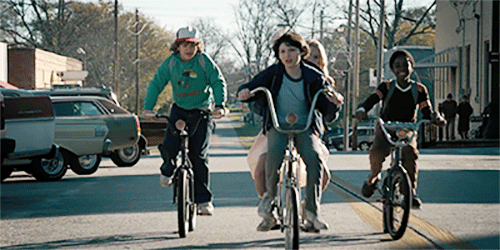
We’ve all heard it before – our carbon footprint is too high. But let’s be real here – what even is a carbon footprint? How bad is mine? And can it even help when the Earth is already on fire?
Well, everything is fine, because I’ve done the hard work so you don’t have to. This guide will show you what a carbon footprint is, and maybe even how to help save the planet.
1. What’s a carbon footprint?
Your carbon footprint is the amount of greenhouse gases (like carbon dioxide and methane) produced by everything you do. Yes, even that sneaky kebab, and all the clothes you ‘accidentally’ bought on payday last week. A carbon footprint includes everything you buy, everywhere you travel, and everything you eat. It’s kind of like the point system in the Good Place, but the good place is not killing the planet.
To work out your carbon footprint you tally up all the ways you caused greenhouse gases to release into the atmosphere and heat up the planet. Depressing, right? But it actually gets worse.
Because of just how much stuff we do and buy, adding up greenhouse gas emissions is incredibly difficult, and a lot of the time products or services will underestimate their carbon footprints.
For example, let’s think of a can of beer. The beer itself has a set of emissions from the brewing process and the hops and the water. But there’s also the aluminium can, and the emissions from creating the metal, and moulding it into shape. Then there’s the people that made the beer, and whether they drive or catch the bus every day to work… you can see where this is going.

2. Getting an accurate carbon footprint is tough.
But despite this, even a general carbon footprint gives us a good indication of just how we’re tracking. It can be a really important metric of how sustainability we are living.
Plus, finding out just how big our carbon footprint is right now is the first step to making it smaller and hopefully helping out the planet. (Which lets be real, the planet could probably use right now.)
3. How do I work out how big mine is?
So now we know what a carbon footprint is – how do we work out if we’ve got petite little feet, or size eleven stompers? After spending a lot of time going though carbon footprint calculators, I’ve got two to recommend.
The first is Global Footprint Network’s Footprint Calculator. After imputing your details, instead of giving you a footprint size, it will tell you how many planets we need if everyone on Earth lived like you. This calculator is simple, and you should be able to do it in a few minutes.
It has some options to add details to improve accuracy, which are definitely worth it, and give you a more exact view of what you’re looking for.
At the end of it all, it’ll show you what area of your life is creating the most emissions (mine was flights, oops) and some simple things you can do to lower your footprint. Now, although this one is easy to use and takes into account many factors of your life, it’s more of a guide to how sustainably you’re living then an accurate carbon footprint calculator. If you want that, you’ll have to bring in the big guns – the Carbon Calculator.
This one is a lot more complex.

You’ll need to pull out your electricity bill, your flight itineraries, and your receipts for medication, but if you take the time to do it, this is one of the most accurate carbon footprint calculators I could find.
Plus, it’ll give you a result showing Australia’s average, and how your footprint stacks up.
4. How to lower your footprint (without making yourself feel like shit)
Okay, so you’ve got your result, and your footprint is probably a little bigger than you’d like it. How do we make it smaller without making life miserable? Well, it’s important to say that one size doesn’t fit all here. Some of the things on this list will be incredibly easy for some people, and super hard for others. Not everyone can bike to work, and not everyone feels like they can give up meat. We’re not here to shame anyone for their choices.
So, with that in mind, here’s some tips to lower your carbon footprint.
- Switch to climate friendly power
This looks daunting, but it’s not. Most companies have an option for you to use a small amount of carbon neutral power. There’s also carbon friendly power providers, so if you have Powershop or Diamond Energy in your state, see if you can make the switch.
- Bike, walk or use public transport to get to work or uni

Pretty self-explanatory – if you can leave the car at home, do it! Even if this isn’t an option for you, carpooling is also a great way to split the emissions from your car.
- Go meat-free
How fond are you of lentils and tofu? Lowering your meat consumption is one of the easiest ways to dramatically lower your carbon footprint. If you are thinking of making the switch, here are some great recipes to get you started.
- Buy less stuff
How often do you buy new clothes? What about updating your phone every year? Literally just buying less, and only replacing things when they’re broken is probably one of the simplest ways to help save the planet. If you’re interested in this, Jan Fran has been doing #NoNewClothes for more than a year now, and has some great tips on her Instagram.
5. Is this even worth it?
I know, I know. The planet is on fire, our PM is happy sticking his head in the sand, and we’re barrelling towards 2 degrees of warming at break neck speeds. Why should we bother eating less meat or biking to work? Might as well enjoy it while it lasts right?
And I get it, I really do. Our individual carbon footprints mean very little in the scheme of things, and won’t save the world on its own. This is only a small part in a much larger strategy of voting, protesting, and convincing the government to make legislative changes.
But, customer behaviours on large scales really does make a difference. Supporting renewable power helps companies create more solar and wind farms. Buying less stuff means that less oil is coming out of the ground to create it.
I know it’s a huge cliché – but in this case, change really can start with you.



